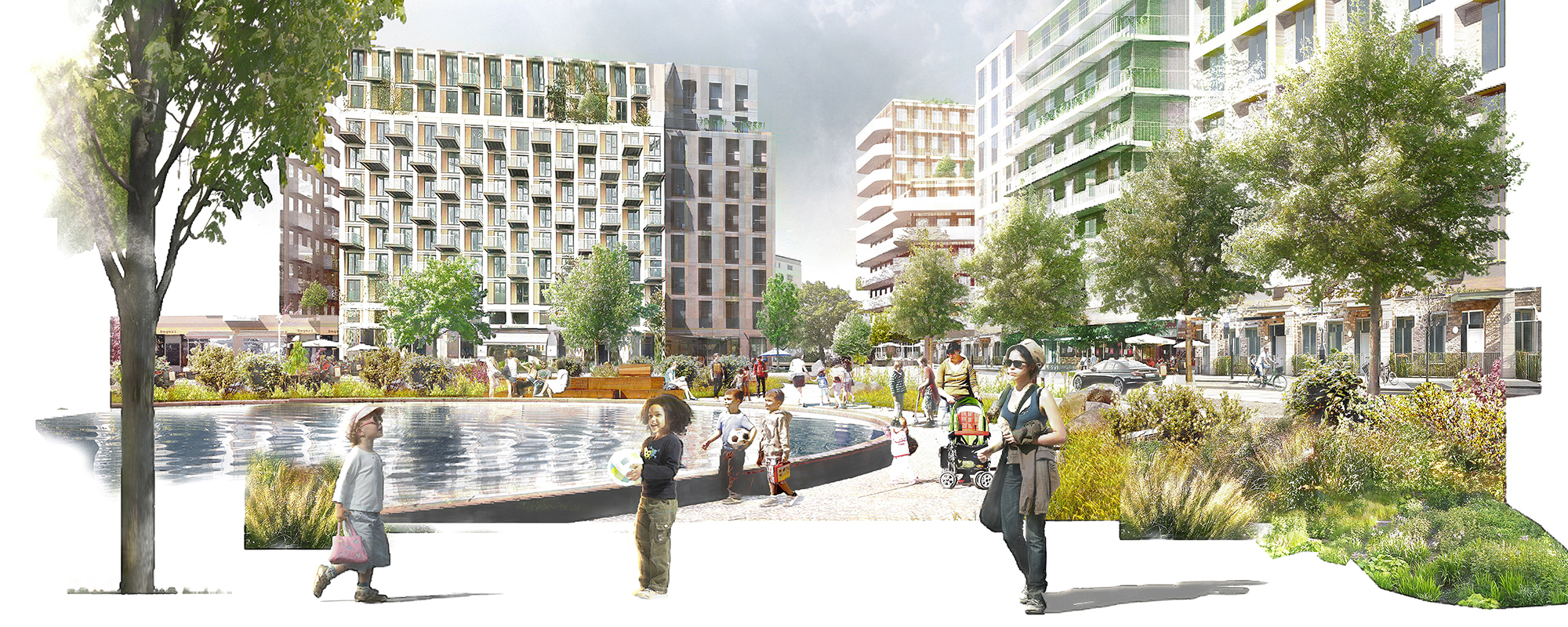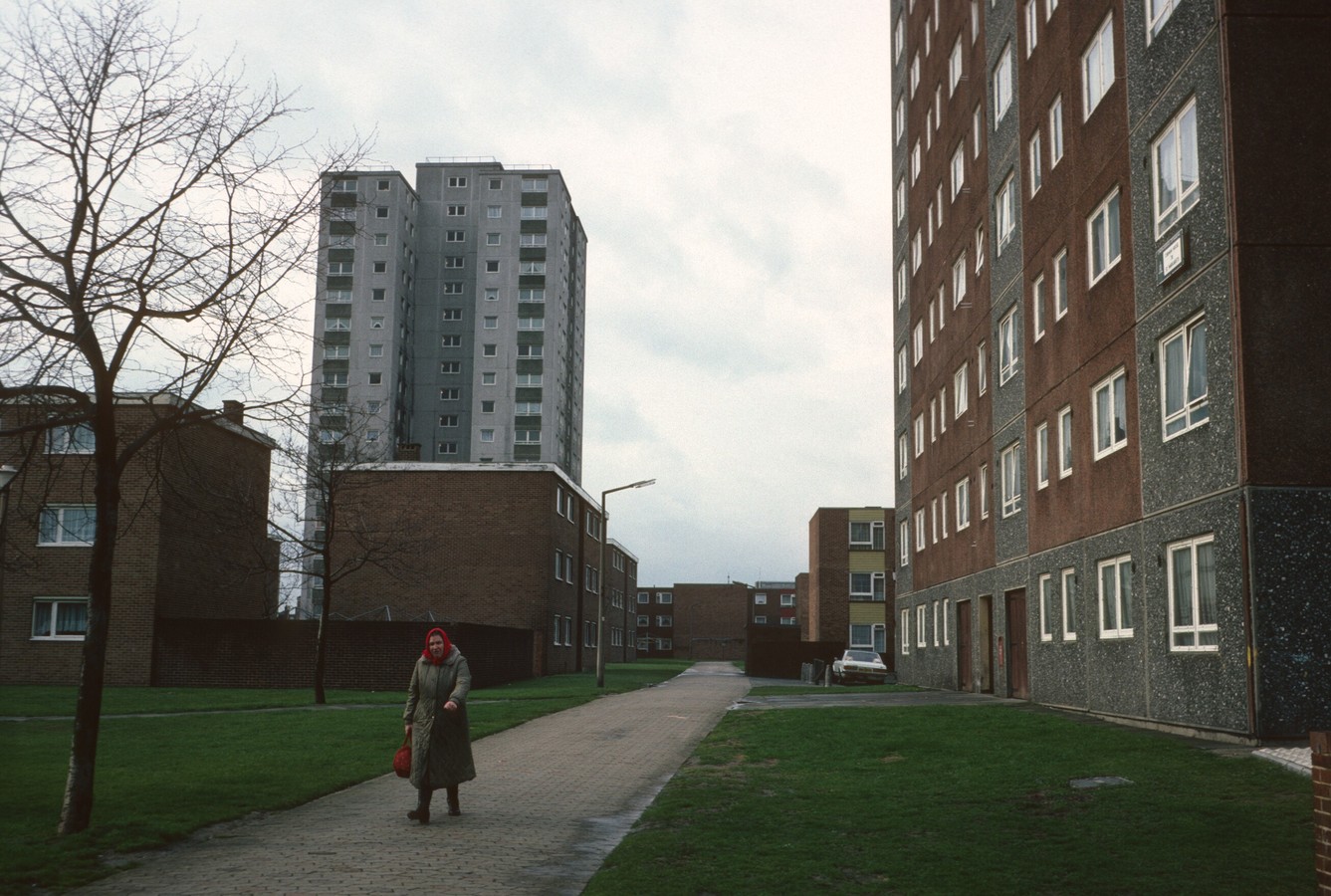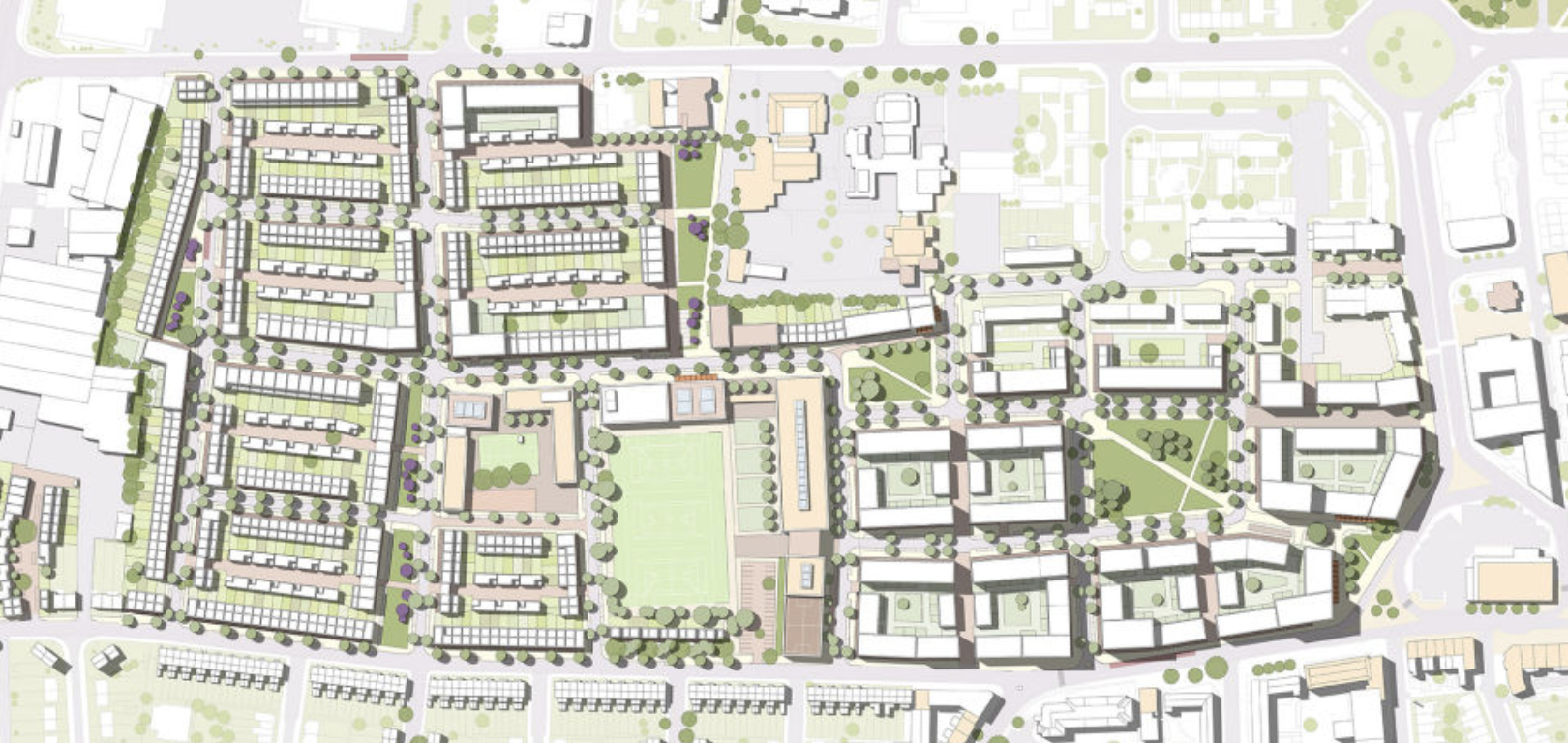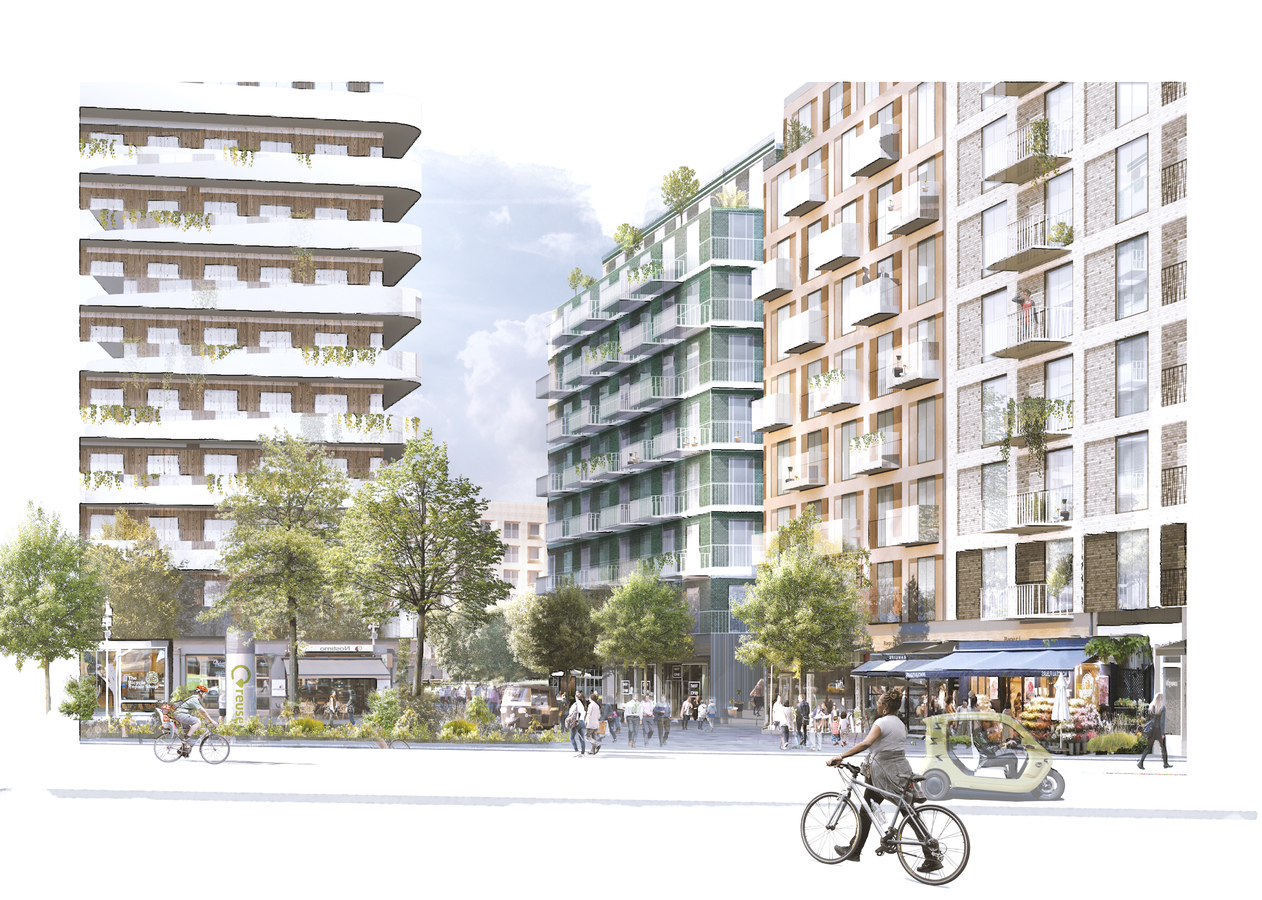Get updates from The Developer straight to your inbox Yes, please!
Estate regeneration the Scandi way
“The building is not rocket science. It’s the public space that lays the groundwork for social infrastructure.” Linda Thiel, London studio director at White Arkitekter

When Barking and Dagenham’s development arm, BeFirst, appointed White Arkitekter to design Phase 2 of the Gascoigne Estate redevelopment, the practice’s Swedish roots were a contributing factor.
“It’s no surprise that Scandinavian countries regularly top happiness polls. We believe this is down to great design,” Pat Hayes, managing director of BeFirst is quoted as saying.
I caught up with Linda Thiel, director of White’s London studio, at Google’s headquarters in King’s Cross ahead of an urbanism forum. White is one of the largest practices in Europe, with more than 900 employees in 13 offices across Sweden, Norway and in the UK.
Thiel is effusive about BeFirst, the young development arm of Barking & Dagenham Council: “They’re doing it for local residents; they’re going to stay on site and manage the buildings; and they really know their communities.”
“It’s really nice to work with a developer who can really get under the skin of a place," adds Thiel. “All the profits go back into the borough and are being reinvested in things like new schools.”
Gascoigne is one of London’s largest estate redevelopment schemes. The last residents of the 1960s housing estate will be relocated this year.
Built on the site of demolished terraced streets, the original Edwardian homes were controversially designated as a slum and destroyed in 1957.
According to the Barking and Dagenham Post, the original Gascoigne homeowners voiced their opposition to the plans and “preferred to keep their outdoor loos and tin baths rather than become council tenants and lose their titles to a small patch of England”.
On their website, Allies and Morrison describe their masterplan as attempting to “repair” the Edwardian streets and reintegrate the estate into Barking town centre. The plan sees all 16 of the estate’s tower blocks demolished and 1,301 households relocated.
By 2024, 1,575 new homes will be built together with a new primary and secondary school, commercial and community space, an energy centre, a medical centre, retail space and playgrounds. Phase 1 was designed by Levitt Bernstein.
Phase 2 of the Gascoigne project, which will be completed in about five years, will further increase the density of the estate, and features 460 tenure-blind flats – a mix of affordable rent, shared ownership and private sale. Phase 3 will be designed by HTA with Pitman Tozer Architects and Stitch.
“We need to make it easy for children and old people to walk, with sweet spots to relax. It’s really about the park bench”
After so much painful disruption, historic and new, how do you design community back in?
Thiel admits that it will be a challenge, but feels it is public space that “lays the groundwork for the social infrastructure of a place”.
“When we work on urban design projects, they are always landscape-led,” says Thiel. “It’s really important to get everything between the buildings right.
“With high density, you need to invest in public space... The building design is not really rocket science.
“One of the key things that we agreed from the start is that it’s designed to be tenure blind and that the courtyards will be shared by all three tenure types, to really get that mix of people,” Thiel says.
The courtyards are open to the public and gated at night, with retail wrapping around the ground floor: “It’s eyes on the street; eyes on the courtyard”
There were discussions of mixing tenure across the different cores as well, but Thiel says: “That’s not doable at the moment for different management reasons.
“The important thing… is the courtyard. I believe if you are in a courtyard block, there are more opportunities for people to meet than in a tower. They can clean up the courtyard together in the spring or autumn, or have a summer party.”
Another challenge is what to do with cars. Thiel describes traffic as “the challenge of our time”.
“We have no idea if we will have cars in 20 years time. We probably will – but to what extent and how will they be used? Shared streets are nice in a way, but if you don’t have your hierarchy and structure right, they’re probably too difficult for people to use…”
Instead, she says White begins with pedestrian routes, linking green spaces and pocket parks with shortcuts through the site. “We start with pedestrians, then bikes, then cars,” says Thiel of the hierarchy.
“The Scandinavian approach that everything is open is embedded in our culture. But it also comes with a lot of responsibility”
“We need people to walk as much as they can and make it easy for children and old people to take it at their own pace,” says Thiel. “We create sweet spots that are ideal distances that you can walk between, and then relax. It’s really about the park bench.”
It makes for a refreshing approach to estate architecture, where many spaces to sit have been taken away to discourage people from dwelling.
As for the courtyards, will they be gated with key fobs for residents only? Fast becoming the norm, the fob approach has been criticised by people such as Dinah Bornat of ZCD Architects for locking children out. Bornat told The Developer that fob access prevents children, who are unlikely to be given their own fob, from independently accessing a safe place to play and meet friends who may not live in the same block.
Thiel says they’ve collaborated with Secured by Design to avoid fobs at Gascoigne. Instead the courtyards are open access during the day and gated at night. Retail on the ground-floor level also wraps around the block, “not just activating the perimeter street frontage but the courtyard as well”.
“When the old chip shop closed, the teenagers said, ‘Now we don’t have anywhere to go’”
Another challenge is how to design for teenagers and young adults. “Where do we put the basketball pitch, or the skate park, or will everyone complain about the noise or teenagers being out late?” says Thiel.
“We need to provide somewhere for them where they can hang out without being overlooked or monitored, to explore their freedom… while also creating a safe environment for them.
“Currently on the estate, one of the blocks has already been demolished, and it used to host the old chip shop. Everyone is like, ‘We don’t have anywhere to go.’”
Thiel learned they used to hang out at the chip shop because they knew it was safe. “Everyone was there, and it was at the centre of the estate so it wasn’t far away from anyone.”
“It’s about providing hubs like that along a route, so that you’re not further than five minutes away from a safe spot, and that might be a shop or whatever.
“White’s [Places for Girls] research asked girls about what makes them feel safe in the city, because we found the boys take over public space and sports places. But we also know that boys and young men are most exposed to crime and stabbings, so we need to create safe places for them, too.”
Can the Scandinavian approach ever truly be applied to Britain?
“The Scandinavian approach is that everything is more or less open. It’s embedded in our culture. But it also comes with a lot of responsibility, like respecting the people who live at ground-floor level, and not making noise at night, for example,” says Thiel.
“Culture changes quite slowly,” Thiel adds. “I’m really passionate about teaching our children to learn to respect all kinds of people.
“It’s nice when children can play out and you can have grandparents calling from the balcony when it’s dinner time. That’s what we’re hoping for,” says Thiel. “I know that’s a huge challenge. It really comes down to the residents themselves.”
So much is unknown, however, when it comes to the future tenants – with the demolition of much of the existing estate, the remaining Gascoigne community will be dispersed.
“We do engagement with the current residents and neighbours, but it might not be them moving in eventually.
“As an architect, I think, ‘How can I provide really good places for people to meet and relax and feel safe?’
“It’s all going to be different in 10, 20, 30 years. We just need to design something robust that can meet as many changes as possible.”
Listen to the full interview in the podcast below by clicking on the link and sign up to The Developer Weekly to be updated when new episodes go online.
Sign up to our newsletter
Get updates from The Developer straight to your inbox
Thanks to our organisation members
Become a member
© Festival of Place - Tweak Ltd., 124 City Road, London, EC1V 2NX. Tel: 020 3326 7238




